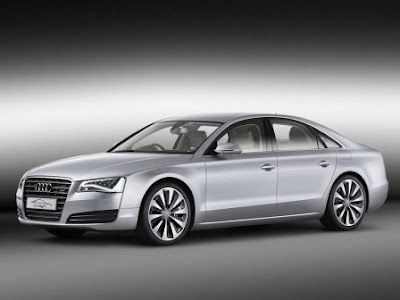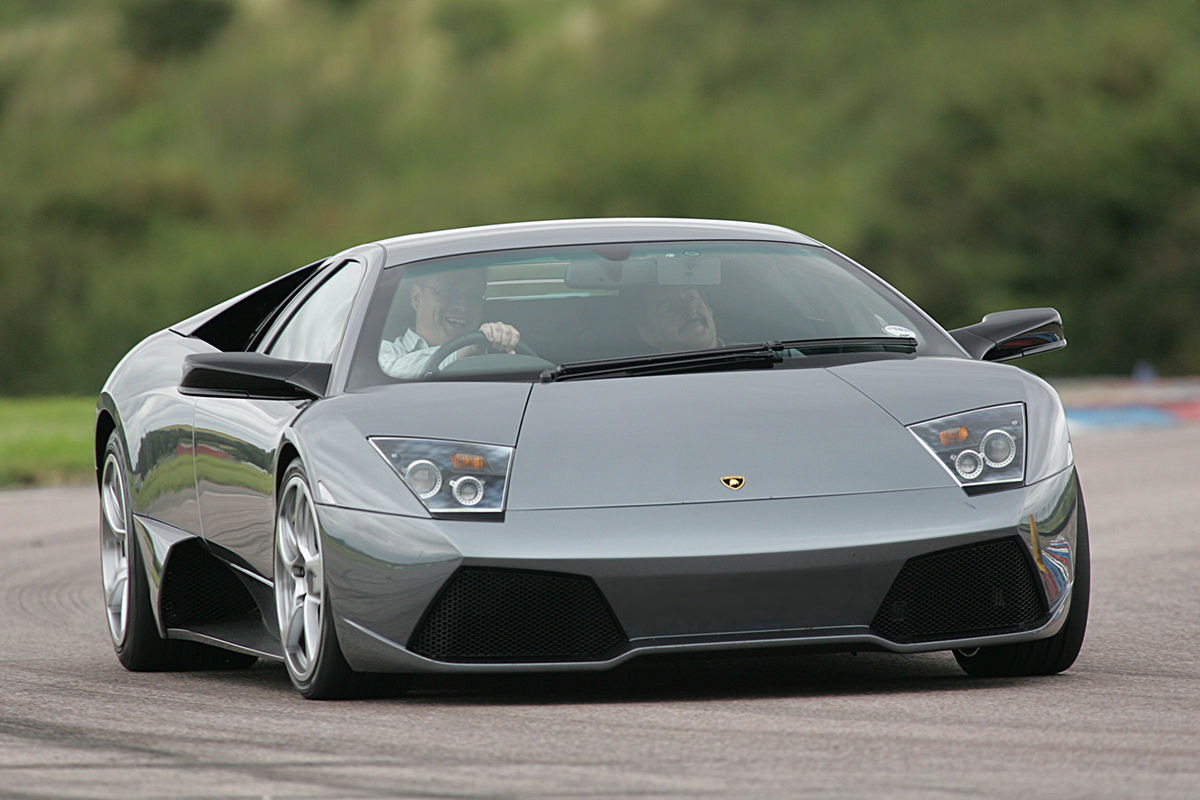
The Audi A8 hybrid is the most economical hybrid in the top class
Finally, Audi decided to introduce a hybrid version of the A8 into production. The car will go on sale this spring and is already positioned as the only true hybrid in its class. What does the cabinet look like from the kitchen?
On the outside, the A8 hybrid differs only in other 19-inch rims. The silhouette remains unchanged and continues to display the typical Audi conservatism. The standard equipment of the hybrid A8 includes a Bose surround sound system (14 speakers, 12-channel amplifier with a total power of 600 watts), which costs PLN 6370 in models with a traditional drive. Apart from the hybrid control system, Audi has not provided any additions. There is no revolution in technology - the drive system is the same as in the Q5 hybrid.
2.0 TFSI engine with 211 hp works with an electric unit, which in total gives 245 hp. and 480 Nm of torque. Power is sent to the front wheels via an eight-speed tiptronic transmission.
Inside the car, you will find batteries that can store 1,3 kWh of electricity. On the course alone, the limousine will travel about 3 kilometers (at a speed of 60 km / h), and if necessary, it can accelerate to 100 km / h, which, however, will reduce its power reserve. When we decide to go with the petrol unit, we can expect to hit 235 km/h and sprint to 100 km/h in 7,7 seconds. For this class, performance can be considered decent, although all traditional it is much faster - the base 3.0 TDI diesel with 250 hp. will accelerate to 100 km / h in 6,1 seconds, and on the highway it will even reach 250 km / h.
However, the most important thing in hybrids is combustion, and against this background, the A8 hybrid looks good. Average fuel consumption is 6,3 liters per 100 km. Interestingly, this is a better result than the Q5 hybrid, which will burn an average of 6,9 liters. However, it is worth comparing the achievement of a hybrid limousine with the base diesel version, because then it turns out that we will not save as much as we might expect. With a quiet ride, the A8 3.0 TDI will consume 6,6 liters (factory data), so at the cost of worse performance and probably a little more price, we will save half a liter of fuel every hundred kilometers. Of course, the difference would be greater if the hybrid technology was combined with a diesel unit, but for now this is the prerogative of French cars.
Less fuel consumption is due not only to the electric motor, but also to the processing for weight loss. Hybrids are known to weigh a lot, and this is not surprising because the batteries are heavier. Audi engineers managed to reduce the weight of the car to 1870 kg. So far, the lightest Audi A8 weighed 1905 kg (3.0 TFSI). The lighter weight of the car is partly due to the use of a smaller petrol engine, but Audi says the hybrid components weigh 130kg, so you still have to lose at least a few tens of kilograms somewhere. In comparison, the Audi Q5 hybrid added as much as 2.0 kg (up to 155 kg) compared to the model with the same engine (1985 TFSI) T, while the 3.2 FSI variant weighs only 1805 kg.
The hybrid Audi A8 does not yet have an official Polish price list, but in the West the limousine will cost 77 euros (700 324 zlotys) in the regular version and 85 euros (400 356 zlotys) in the version extended by 13 cm. Thus, the car will be cheaper than all its hybrid competitors in this class, and what’s more: after a hard conversion of the amount from euros to zlotys, it turns out that the A8 hybrid will be a thousand zlotys cheaper than the base model that is currently on sale. offer in Poland (3.0 TDI 250 hp). Currently, the petrol version 3.0 TFSI (290 hp) costs 344 800 zlotys, and the powerful, 350-horsepower diesel 4.2 TDI costs more than 403 thousand zlotys. zloty For lovers of strong sensations, the 372-horsepower version of the 4.2 FSI is suitable for less than 397 thousand. zloty Will the hybrid really be the cheapest version of the A8? I have the impression that it will be 20-30 thousand. PLN more expensive than the weakest diesel costing 325 thousand. PLN, because the basic Audi A8 (3.0 TDI 204 hp) on the German market costs 69 600 euros (290 thousand zlotys), and the variant 3.0 TDI with 250 hp. costs 73 euros (thousand zlotys), which is much cheaper than on the Vistula.
The fact that both BMW and Mercedes already offer this type of car is an indication that Audi has slept a bit with the hybrid version of its flagship limousine. The Bavarian manufacturer has a different approach to the concept of ecology than other domestic competitors. Instead of a small four- or six-cylinder engine, the ActiveHybrid 7 (from PLN 487) has an 200-litre V8 (known from the 4,4i) that is coupled to an electric motor to deliver 750 hp. system. Even with the support of the electric unit, BMW will still burn around 465 liters of gasoline in the combined cycle and emit 9,5 g of CO219 per kilometer driven. This is not enough, but if necessary, the system will accelerate to 100 km / h in 4,9 seconds, which is 0,2 times faster than the i version.
The hybrid Mercedes S400 (from PLN 417) is based on a 000-liter V3,5 engine that will consume an average of 6 liters of gasoline per 8 km and provide good acceleration (100 seconds to 7,9 km/h), although for a BMW it very far. The Lexus LS100h will also perform better on the road (from PLN 600), which thanks to the 530 hp system. will accelerate to 200 km / h in 445 seconds, but the average fuel consumption will be higher than that of Mercedes, and will be up to 100 liters. The Audi A6,3 Hybrid, despite the small drive system, will not only be slightly faster than the S-Class, but also more economical. This means that the new flagship limousine from Ingolstadt will consume the least fuel in its class. This, of course, is due to the use of a small power unit, which, despite its small power, generates sufficient power and torque, as well as the low weight of the car.
When developing the hybrid limousine, Audi focused on achieving the lowest possible fuel consumption. The point seemed obvious, but BMW or Lexus approached the topic in a completely different way - hybrid systems were combined with large, fuel-consuming units, which could not result in amazingly low fuel consumption, but allowed efficient movement in any conditions. Mercedes, with its S400 hybrid, stood in the middle, while Audi, using a unit known, for example, from the A4 model, gave a clear sign that only the lowest possible fuel consumption matters to us. And indeed - they managed to be called the most economical top-class limousine. But will it ensure financial success?

